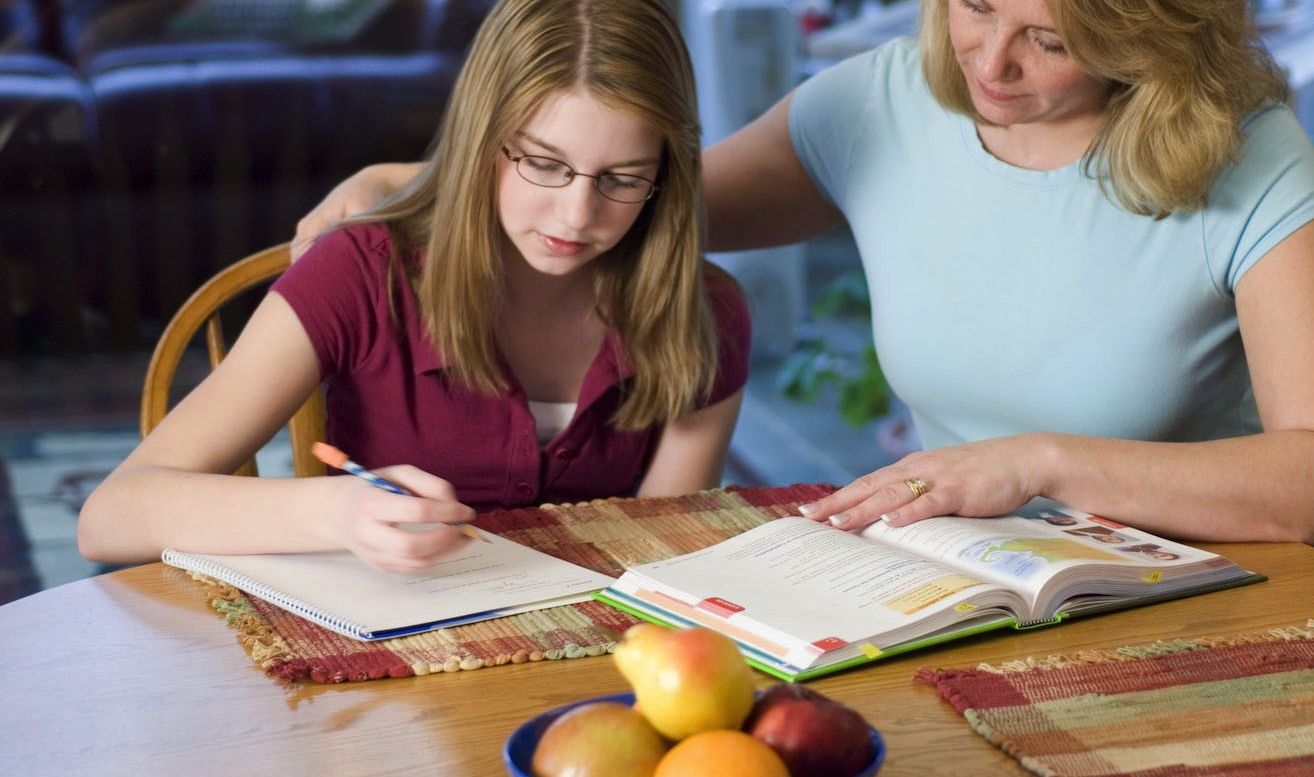So you’ve decided to embark on the homeschool adventure. Congratulations! Of course every adventure requires preparation. No doubt you have thought long and hard about the path you are about to take – weighing pros and cons, talking with various people, and researching, researching, more researching. You have your map (your curriculum) in hand and you might be wondering if there is anything else you need in your pack. Here is a tool you would not want to be without as you begin your journey – organizing your home. Two essential aspects of organizing your home involve where and when homeschool will take place.
Where learning will take place
For most homeschool families, it is important for parent and child to have a sense of space that delineates their school efforts. Catherine Jones, who homeschooled her son many years ago in Canada, offered this advice, “There must be a location in the home which is specific to the school work. Nothing else goes in that place whether it be a room, a table or a cupboard. It seemed to help mentally for both parent and child to prepare for the school day when this location was approached.” For some this is simply a container that holds books, materials, and supplies that they will need. One homeschool friend told me each of her children has a backpack with their schoolwork. She likes the flexibility school-in-a-bag affords – kind of a “have backpack, will travel.” Another idea is used by first year homeschool parent, Jeri Hasley. They organized a school cabinet in their dining room. When it is time for school, they open the cabinet. When school time is over, they close the cabinet. Jeri says, “It makes me feel like [it’s a] real home when I can just close it up and the house looks like a home rather than a classroom. For me that is refreshing.” Other families create an entire separate schoolroom, recreating a school environment only with Mom or Dad as the teacher.
Regardless of the space you designate, here are some important considerations.
Distractions
Find a place where your child can best focus. Some children can work fine in a cluttered area and even thrive on that type of surrounding. Other children require a space completely empty except what they are working on. Noise is a source of distraction for most but helpful to others. Isolation is best for most but not for everyone. Get a feel for what best helps each child to concentrate and implement that in the organization.
Curriculum
Consider the type of curriculum you are using in choosing your learning space. If online learning, then obviously access to a computer will be essential. If using packaged curriculum, the space should accommodate the books and materials required. Hands-on and kinesthetic lessons may need a different space altogether. An appropriate place to be messy is important for science experiments and art projects.
When learning will take place
Planning when homeschool will happen is very essential to its success. Most families find it helpful to put a “master schedule” on paper. This master schedule shows a week at a time and what happens during major time slots each day of that week. This will require aforethought now and tweaking as you go along, but well worth the effort. Here are some considerations as you plan your master schedule:
Learning happens in a home.
A home, of course, is a place where people live. Inherently there are dishes to be done and laundry to be folded. One mother, Claudia Teubl, who has successfully homeschool her 8 children, had this approach: “I always made sure the children knew that it would be impossible to homeschool without their help. I simply would not have had enough time to do the housework and the schooling. We had specific times for chores, and we always had children work in pairs. (I got the youngest as my partner). After breakfast we would split up into laundry crew, cleaning crew, and kitchen clean up. 20-30 minutes could accomplish a lot.” They would do these chores before their learning time each day. Not only did it ensure that Claudia would have the time necessary to focus on schoolwork, but it helped the children take ownership of their home and time together. As you are planning when learning will take place, do not forget to plan for the other things that have to be accomplished in a home.
Learning happens outside a home
Contrary to its name, most homeschool families do not spend all day/everyday at home. There are music lessons, sports opportunities, learning coops, and social gatherings. Often these are weekly and need to be balanced with other learning. This is where a master schedule is helpful. For example, if you notice you will be out longer on Tuesdays for piano lessons, then you can plan for a longer “seatwork” time on Monday to ensure all your learning objectives are met for the week. Other important outings are occasional, like trips to museums and historical sites. When these are planned for in advance they can be enhanced by learning before and after the outing.
Learning happens with children
In planning your schedule, it is important to keep in mind that most children learn best in the morning when they are rested. Many homeschool families structure their day so that the majority of their “book learning” is done during those morning hours. The afternoon can be used for experiential learning or physical activity. When children are writing, it is important that they can sit where their feet can touch the floor and that the table is the appropriate height. This helps to “center” them and enhance their eye-pencil control. Children learn best when they feel their environment is secure. A schedule and routine can help provide safe sense of predictability. On the other hand, having a sense of ownership for their learning is also important for children. Therefore having children’s input into their homeschool experience is important as well.
In thinking of organizing your home for your new adventure, it would also be good to prepare your mindset. I remember one day when all my kids were sitting around the dining room table, each working along smoothly, interacting nicely with one another, and I thought to myself, “THIS is why people homeschool!” Oh, that sweet sense of productive harmony. However the next day, was a different story. Those very same angels were complaining, balking at having to do any work, bickering with one another, and I thought to myself, “THIS is why people DON’T homeschool!!” As you start your journey, know that there will be plenty of days that closely work out according to that romantic notion you had when you first entertained the idea of homeschool. You will get to witness the “Aha!” moments. You will get to see your child fall in love with learning. You will have the satisfaction of seeing progress made. However, be advised – there will be days when this is not the case. On these days, things will be hard and not go according to plan. You will be tempted to doubt yourself as a teacher, your child as a student, and even doubt that homeschool was the right choice. When these days come, remind yourself why you chose to homeschool. Make any necessary course corrections and remember that tomorrow will be a fresh, new day. Difficulties are a part of every adventure.
Giving thought and effort to organizing your home could prove a useful tool in your pack. The Swiss army knife, if you will!
Enjoy your learning adventure!!
Copyright © 2013 J. Hoffman / GSN (NV)
“If you liked this post – Great!! Please ask before you re-post. Thanks!”
Email: JHoffman@GlobalStudentNetwork.com

